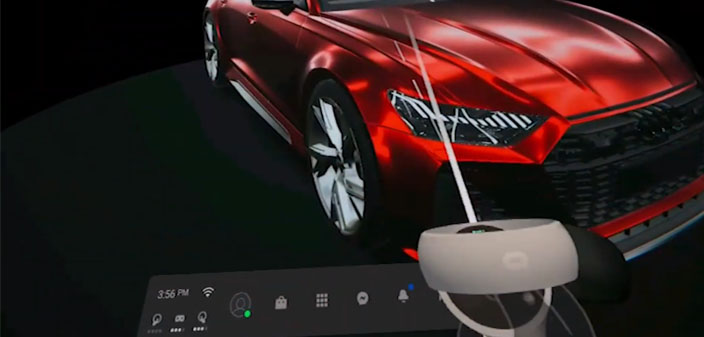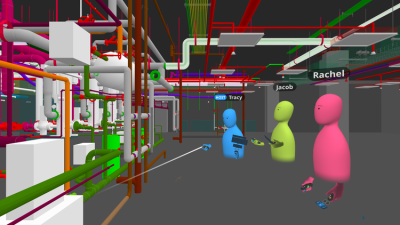Holo-Light, a company pushing for Augmented and Virtual Reality as a driver for global digitization and a new way of experiencing and interacting with content, has brought XR Streaming for Oculus Quest 2 with its ISAR (Interactive Streaming for Augmented Reality) SDK.
Launched in late 2020, Holo-Light’s XR streaming solution ISAR is capable of streaming entire AR and VR applications (XR) in real-time via local servers or the cloud. By addressing performance restrictions due to the limited computing power of mobile devices such as smart glasses, VR headsets, or smartphones, ISAR enables visualization and interaction with highly polygonal, data-intensive content like graphics-intensive 3D objects, 3D CAD models, BIM, and Point Cloud. The SDK features out-of-the-box support for the HoloLens 2, Android, and now the Oculus Quest 2.
Designed with affordability in mind to bring more people into the VR world, Facebook’s all-in-one Oculus Quest 2 was quite praised on its launch. Starting at $299, the Quest 2 is one of the most innovative VR headsets due to its size and portability, as well as some of the incorporated technology, like hand-tracking without using controllers. By integrating Qualcomm’s Snapdragon XR2, the headset provides a fully wireless experience, allowing users to become fully immersed in any virtual world without any worry about getting entangled on a cable.
That’s where Holo-Light saw its chance to enable real-time streaming of most complex VR applications to Oculus Quest 2 devices via cloud or on-premises, providing higher data security since data is merely streamed and not stored on the mobile device. For example, since ISAR can be integrated into any XR app developed with Unity in form of a simple plugin, a virtual reality app can be executed on a remote computer such as a local server or the cloud. By running a client application on a Quest 2 that receives the image from a server application, users have access to real-time streaming of VR content, allowing better graphics, a significantly more intricate logic, and higher complexity.
“The success of Oculus Quest 2 shows how compelling VR can be when it is wireless and easy to use. It is time to unleash the full potential of VR, break the performance barriers of mobile devices, and bring VR content in unprecedented detail and complexity to Oculus Quest 2. ISAR XR Streaming is just the technology to do that,” said Alexander Werlberger, CTO and Co-Founder of Holo-Light.
ISAR SDK’s Beta version for Oculus Quest 2 is now available on GitHub. Developers can register for a free, supported trial on Holo-Light’s special web page.








